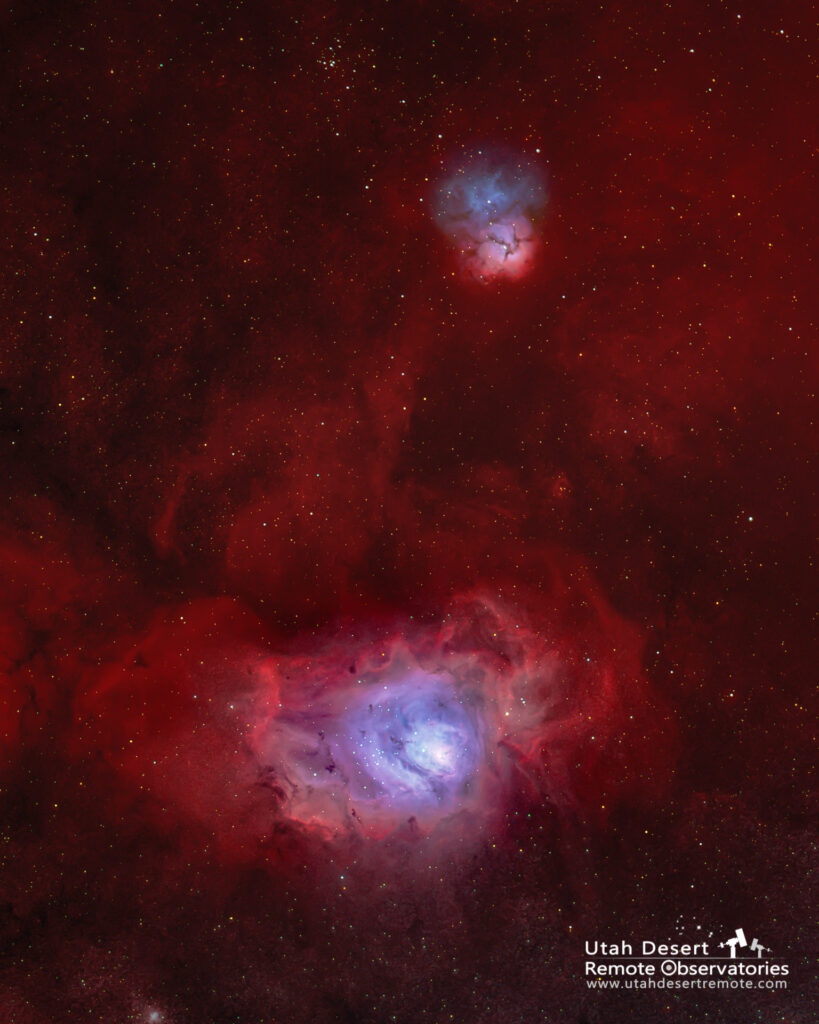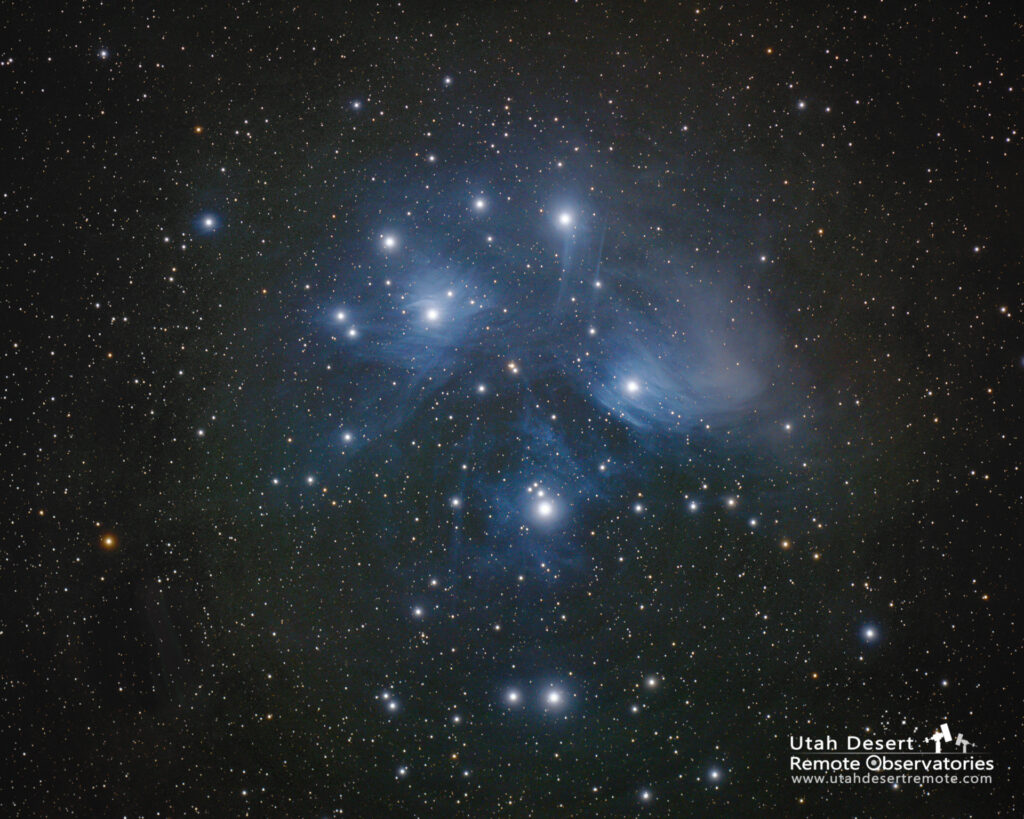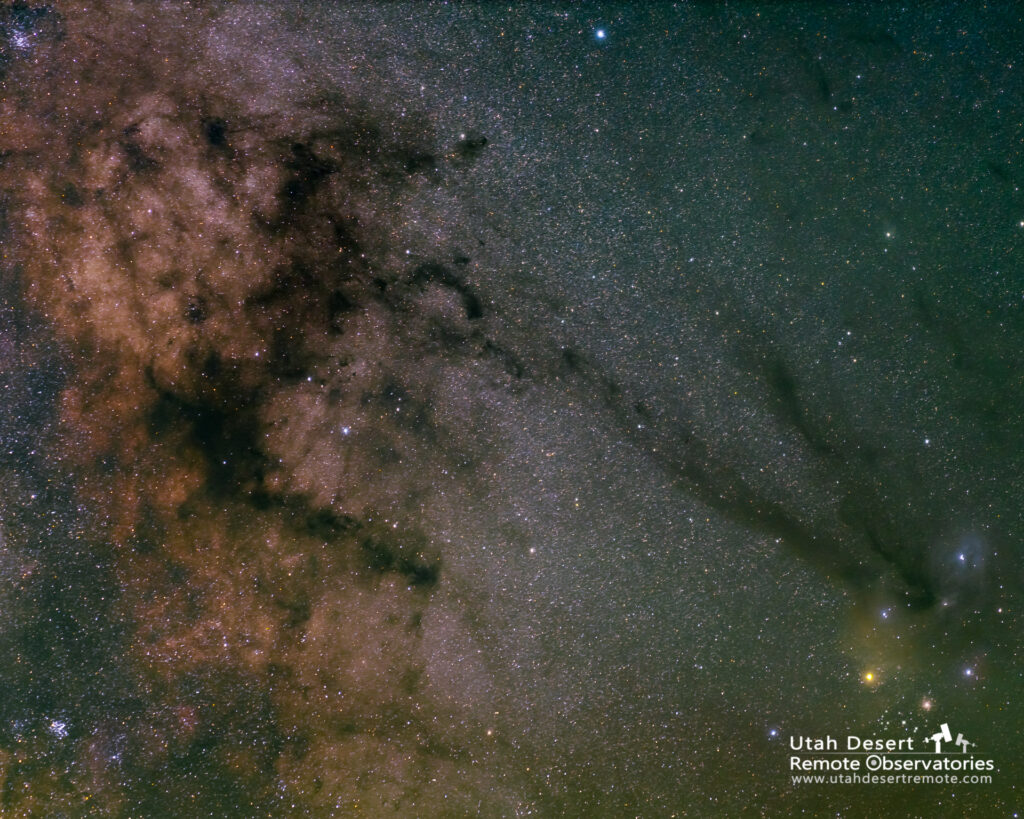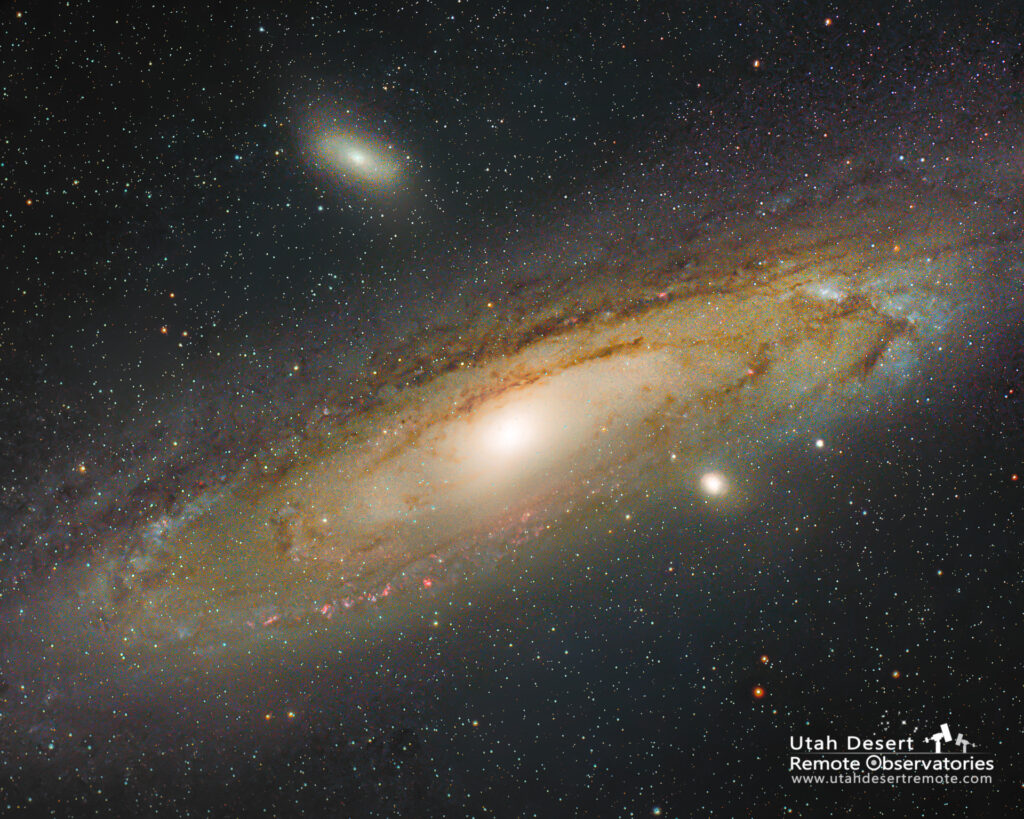There are three types of nebulae in the night sky; emission, reflection and dark nebulae.

An emission nebula actually emits its own light from the subtle glow of ionized gas. The Lagoon Nebula is a good example of an emission nebula. The example here was photographed using special filters that isolate just the narrow band of color that is emitted by ionized hydrogen (red) and oxygen (blue).

A reflection nebula is simply a dust cloud reflecting the light of nearby bright stars. The Pleiades is a great example of a bright reflection nebula. No special filters are needed when photographing a reflection nebula.

A dark nebula is created when a cloud of dust obscures the more distant stars behind it creating the impression of a region without stars. The Dark Horse Nebula which appears near the center of our Milky Way Galaxy is a very large and popular dark nebula that shows up in many night sky photos. This example was photographed with a very short telephoto focal length lens instead of a telescope and covers a much wider field than the other two examples.

You might also consider galaxies to be a fourth type of nebula since they can appear as fuzzy spots in the night sky. The Andromeda Galaxy shown here is a great example and is the nearest large galaxy to our own. It’s also the most distant feature you can see with the unaided eye. They are photographed more like a reflection nebula since you don’t typically need any special filters to capture the broad spectrum of color of light they emit.
